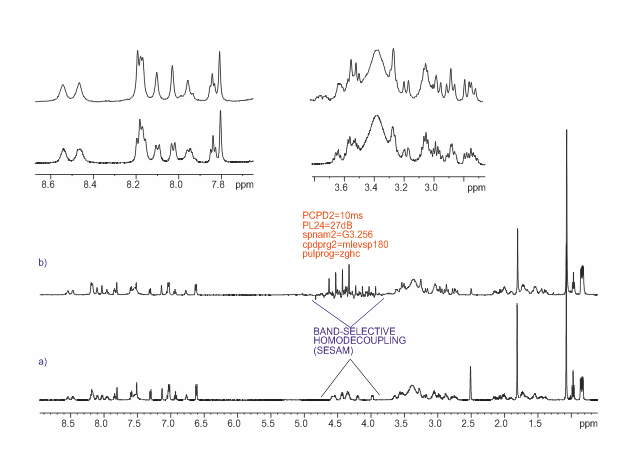|
|
See Homodecoupling experimentREQUIREMENTS
Easy implementation on AVANCE spectrometers.VERSIONS
In a band-selective homodecoupling experiment, a conventional 1H spectrum is recorded. From the second channel, specific region-selection irradiation is applied on a predefined frequency during the acquisition period (see homodecoupling building block).EXPERIMENTAL DETAILS
The homodecoupling experiment can be acquired, processed and plotted in a fully automated way. Minor changes from a predefined parameter set are required. Important parameters to consider are the offset and the power level of the irradiation. It is useful to have a calibration of the field strength delivered from the decoupler in order to optimize the required selectivity and to minimize Bloch-Siegert shift effects.SPECTRAFor further details on practical implementation on AVANCE spectrometers see Tutorial: Homodecoupling
The homodecoupling experiment affords a conventional 1H spectrum in which the irradiated signal is missing and all protons J-coupled to this irradiated 1H will show residual multiplet structure (the corresponding J coupling splitting has also been removed). Comparison between multiplet structure of the conventional 1H spectrum and the homodecoupling spectrum allows to measure and to assign coupling constants values.RELATED TOPICS
Also see Homodecoupling Test
A 2D COSY experiment can be a more useful alternative to trace out all J-connectivities from a single spectrum.